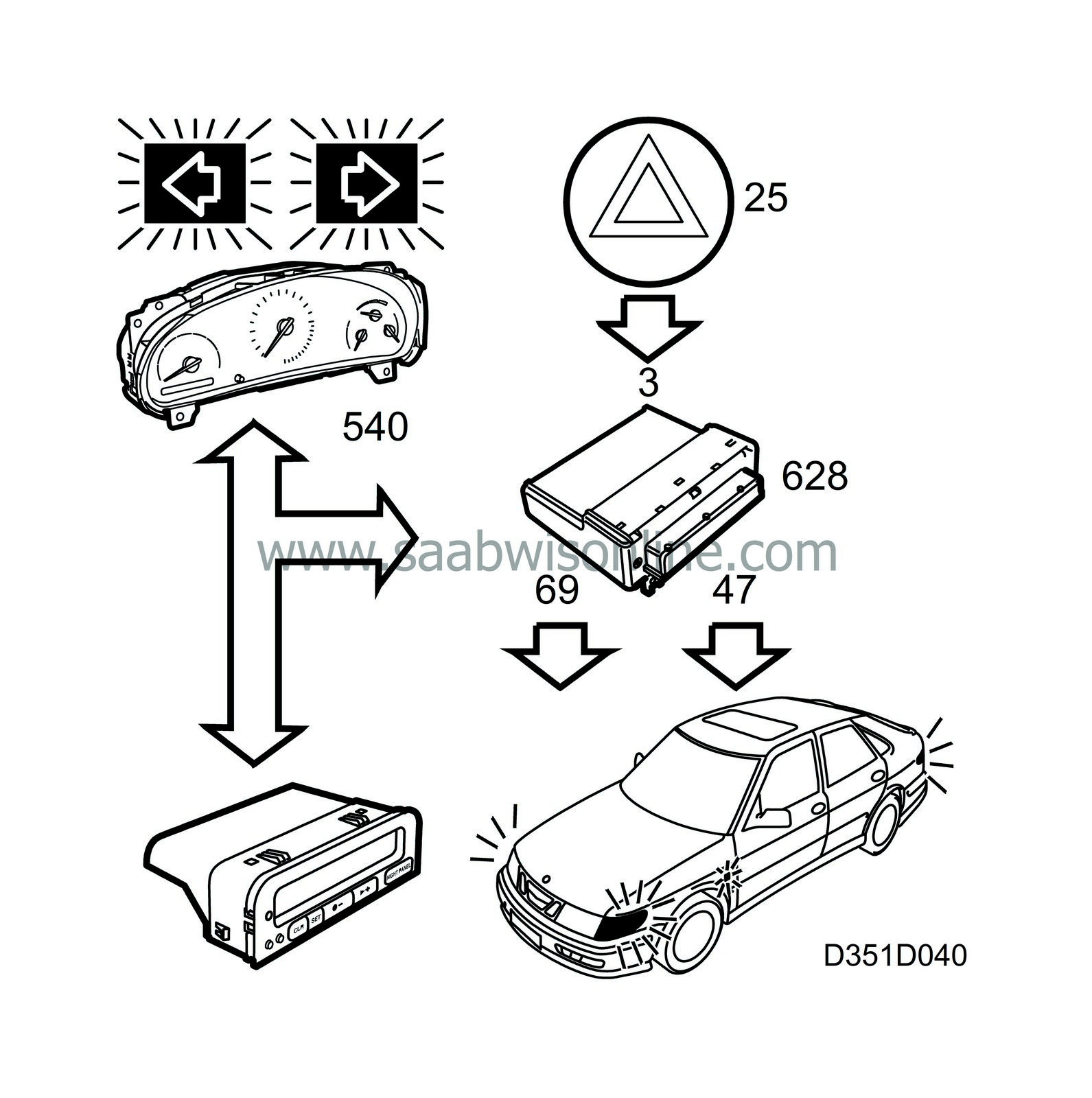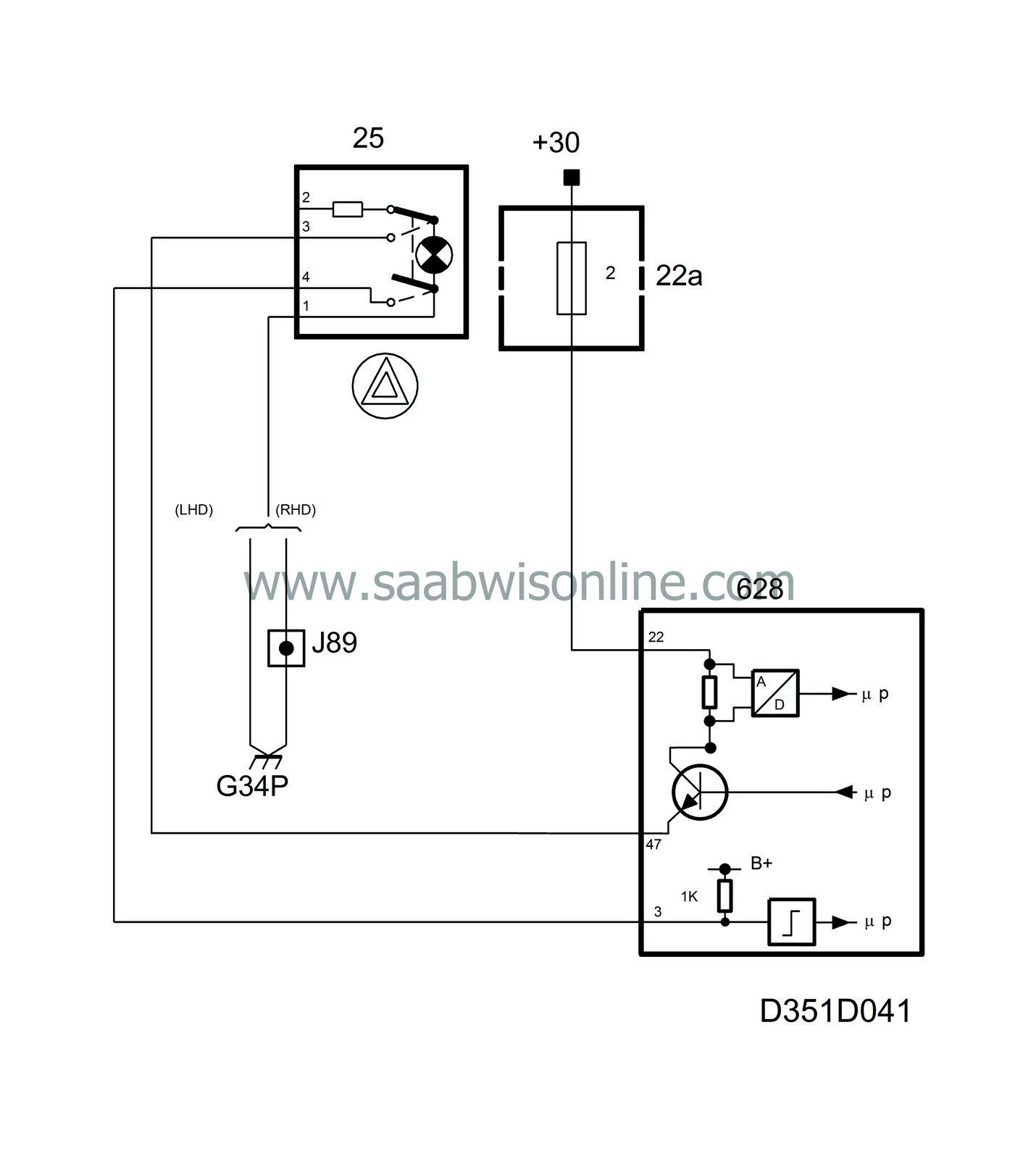Hazard flashers
| Hazard flashers |
The hazard flashers are activated with the switch on the dashboard whatever the position of the ignition switch. The power to the indicator lamps is supplied via DICE.


Voltage +30 is always supplied to pin 22 on the control module via fuse 2. When the hazard flasher switch is activated, it closes and pin 3 on the control module is grounded via the switch (25).
The control module then delivers voltage pulses to the indicator lamp in question from:
| • |
pin 69 for LH direction indicator
|
|
| • |
pin 47 for RH direction indicator
|
|
The indicator lamp in the hazard flasher switch (25) is powered when inactive from pin 49 of the control module and lights dimly.
When the hazard flashers are activated, voltage is fed to the indicator lamp in the same pulses as the voltage to the LH direction indicator lamps and the indicator lamp then flashes with normal power.
DICE monitors the direction indicator circuits internally by measuring the current through and voltage across a resistor inside the control module on pin 22. If the current/voltage ratio changes, DICE reacts. In the event of overloading, DICE switches the output off. For underloading, DICE increases the flash frequency.
The normal flash frequency is 90±5 flashes per minute. When the circuit is underloaded, i.e. the rating of the lamp bulb is too low or the bulb has failed, the flash frequency is doubled.
Power to the direction indicators on a trailer connector is fed via connector 258.
The hazard flashers can be activated by TWICE when the alarm is activated. TWICE sends the status of the hazard flashers (ON/OFF) to the bus.
Activated hazard flashers are indicated by the respective indicator lamps on the MIU (540) after flashing information (ON/OFF) has been received from the bus.
Active direction indicators are also indicated acoustically with a "tick-tock" sound, which is generated in the SID unit after it receives information about the direction indicators from the bus.
If there is no voltage on the control module pin 22, no information is sent to the bus.
The hazard flasher duty cycle is normally 50%. It decreases in the event of high/low battery voltage. At high voltage to limit the temperature rise inside DICE and at low voltage to save the battery. Decreases to 30% at the lowest.


